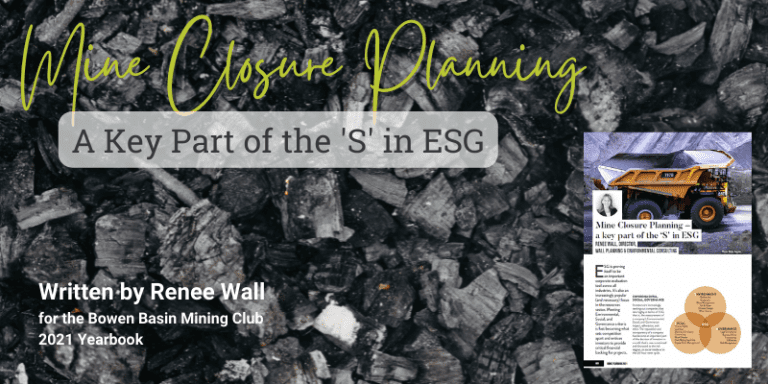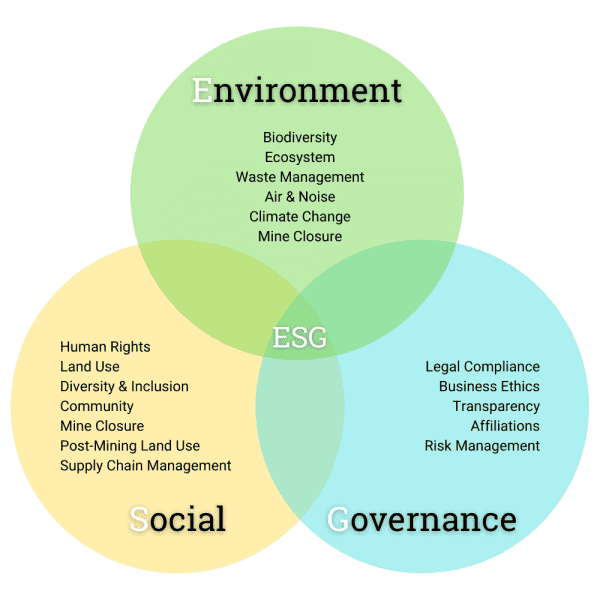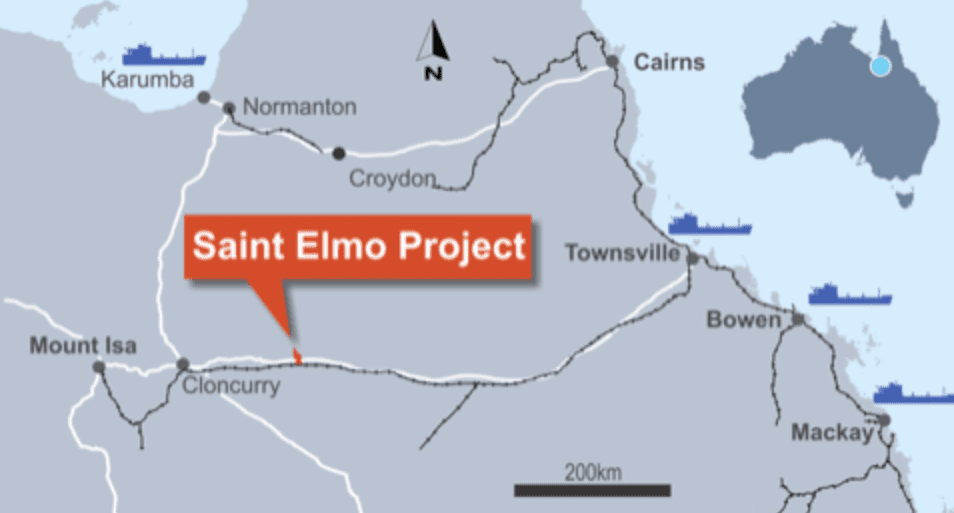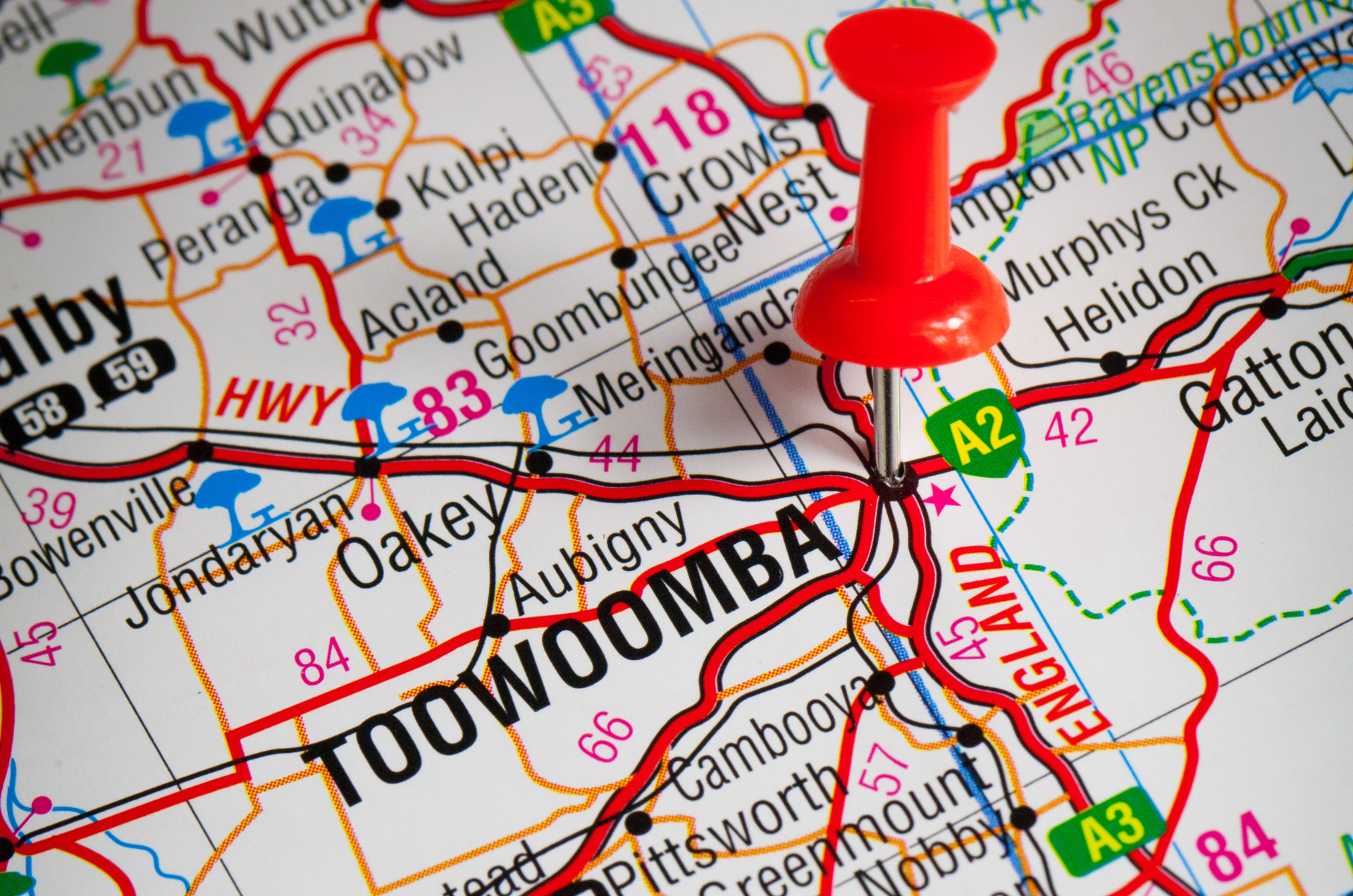Mine Closure Planning: A Key Part of the ‘S’ in ESG
March 21, 2022

This article was originally published in the Bowen Basin Mining Club 2021 Yearbook and has been republished on this site with permission.
—-
Environmental, Social, Governance (ESG)
Investors are increasingly seeking out companies that rate highly in terms of ESG; that is, the measurement of a company’s Environmental, Social, and Governance impact, adherence, and ethic. The reputation and transparency of a company has become an important part of the decision of investors in a world that is now scrutinised and discussed to the nth degree, on social media or in the 24-hour news cycle.
—-
ESG is proving itself to be an important corporate evaluation tool across all industries. It’s also an increasingly popular (and necessary) focus in the resources sector. Meeting Environmental, Social, and Governance criteria is fast becoming what sets competition apart and entices investors to provide critical financial backing for projects.
Investors are increasingly seeking out companies that rate highly in terms of ESG; that is, the measurement of a company’s Environmental, Social, and Governance impact, adherence, and ethic. The reputation and transparency of a company has become an important part of the decision of investors in a world that is now scrutinised and discussed to the nth degree, on social media or in the 24-hour news cycle.

The troublesome part of the ESG tool is the measurement of the Social criteria. Environmental impact and Governance adherence is addressed and measured through stringent legislation and regulations set out for resources companies, including the Environmental Protection Act 1994, Mineral Resources Act 1989, and a company’s policies and Code of Ethics.
Meeting obligational, legislative, and ethical standards is part and parcel of extractives from the first day of planning until the day of closure. However, Social is a far more recent criteria for companies to address, and is certainly not fully woven into mine closure legislation, despite it being an ethical obligation in itself.
Social Ethics in Mine Closure
When we think of extractives, coal mining is largely the first thing that comes to mind. This is largely due to the sudden race towards renewable energy, which has divided communities and stakeholders in their opinions about the future of coal in Australia. Investors are keenly aware of this division, which is why the social impact and reputation of a company in visibly volatile times can be what tips the scales.
Whilst the global demand for coal is high, mine closures still inevitably happen, and these closures are a critical moment in the development of a company’s reputation and social obligation. Acceptance of a company within its communities plays a big part in the success of current and future projects.
It comes down to the bottom line – investment potential. Investors are increasingly seeking out companies that rate highly in terms of ESG. Whilst each area of ESG is a standalone criterion, there is crossover and a reliance on each other for support and to form an overall reputational image. Governance and Environmental criteria have long been embedded in company strategy and operation. Social should be as well, at minimum in the form of Social Impact Assessments, not only in planning and during operation, but particularly in mine closure planning.
Communities benefit in so many ways from the coal mines they support. The economy gets a boost, jobs are created, infrastructure improves – then the mine closes and it’s all whisked away. These small communities cannot support the loss of jobs, loss of income, and damage to all the small businesses that provided services to the mines and their employees.
Social Impact Assessments in Mine Closure
A Social Impact Assessment (SIA) is the formal process of understanding the social effects a project or company has on its communities. This process identifies the social issues of a community, the part the company or project will play within those communities and issues, and the action plan for enhancing positive outcomes and mitigating negative outcomes.
Glencore’s Clermont Mine Closure Preparedness Project
Glencore’s Clermont Mine is anticipated to close in 2027. Wall Planning & Environmental Consulting recently worked with Glencore to prepare the Social Impact Assessment for the Clermont Mine Closure Preparedness Project. Glencore’s mine closure planning protocol states:
“Social transition or mine closure recognises the risks associated with local dependence on the mine and consequently creates opportunities to encourage the development of sustainable post-closure options…This shall include:
(a) Identification of community concerns, needs, opportunities, risks and impacts associated with the site closure; and
(b) An outline of community strategies and social involvement plants focusing on enhancing socio-economic capacity, prosperity and sustainable development of the communities that avoids dependency on a Glencore Coal Assets Australia Operation closure.”
As an integral part of the SIA, we held comprehensive engagement and community consultation that included workshops, mine site tours and focus groups to understand the views of the community and inform Glencore’s activities in preparing for closure.
Meeting obligational, legislative, and ethical standards is part and parcel of extractives from the first day of planning until the day of closure. However, Social is a far more recent criteria for companies to address, and is certainly not fully woven into mine closure legislation, despite it being an ethical obligation in itself.
So, how can we measure something that is seemingly intangible?
When we think of extractives, coal mining is largely the first thing that comes to mind. This is largely due to the sudden race towards renewable energy, which has divided communities and stakeholders in their opinions about the future of coal in Australia. Investors are keenly aware of this division, which is why the social impact and reputation of a company in visibly volatile times can be what tips the scales.
Whilst the global demand for coal is high, mine closures still inevitably happen, and these closures are a critical moment in the development of a company’s reputation and social obligation. Acceptance of a company within its communities plays a big part in the success of current and future projects.
It comes down to the bottom line – investment potential. Investors are increasingly seeking out companies that rate highly in terms of ESG. Whilst each area of ESG is a standalone criterion, there is crossover and a reliance on each other for support and to form an overall reputational image. Governance and Environmental criteria have long been embedded in company strategy and operation. Social should be as well, at minimum in the form of Social Impact Assessments, not only in planning and during operation, but particularly in mine closure planning.
Communities benefit in so many ways from the coal mines they support. The economy gets a boost, jobs are created, infrastructure improves – then the mine closes and it’s all whisked away. These small communities cannot support the loss of jobs, loss of income, and damage to all the small businesses that provided services to the mines and their employees.
The key to social ethics in mine closure planning is proactive sustainability. Let’s not whip the rug out from under our communities – let’s leave a positive legacy.
A Social Impact Assessment (SIA) is the formal process of understanding the social effects a project or company has on its communities. This process identifies the social issues of a community, the part the company or project will play within those communities and issues, and the action plan for enhancing positive outcomes and mitigating negative outcomes.
A SIA is about successfully becoming a PART of the community, helping that community to strengthen and grow, but also ensuring growth and development during the life of the mine is sustainable upon mine closure.
Glencore’s Clermont Mine is anticipated to close in 2027. Wall Planning & Environmental Consulting recently worked with Glencore to prepare the Social Impact Assessment for the Clermont Mine Closure Preparedness Project. Glencore’s mine closure planning protocol states:
“Social transition or mine closure recognises the risks associated with local dependence on the mine and consequently creates opportunities to encourage the development of sustainable post-closure options…This shall include:
(a) Identification of community concerns, needs, opportunities, risks and impacts associated with the site closure; and
(b) An outline of community strategies and social involvement plants focusing on enhancing socio-economic capacity, prosperity and sustainable development of the communities that avoids dependency on a Glencore Coal Assets Australia Operation closure.”
As an integral part of the SIA, we held comprehensive engagement and community consultation that included workshops, mine site tours and focus groups to understand the views of the community and inform Glencore’s activities in preparing for closure.

The SIA addressed the following key issues:
Health and Community Wellbeing
Community and Stakeholder Engagement
Housing and Accommodation
Local Business and Industry
Employment / Workforce
Measuring the Intangible
It’s certainly not unreasonable to point out that the social aspects of a community can be complex and aren’t something that can be easily measured on a scale. The subtle and incredibly personal nuances of each community dictate that social measures need to be highly tailored to suit the community and increase positive impacts.
It may not be truly possible to measure social impact on a scale, but strict criteria should be addressed to ensure that companies and projects are properly accountable for the impacts they have on their host community.
The ‘measurement’ of the criteria is, perhaps, more of an action plan:
Familiarity
Have you thoroughly researched all social aspects of your community?
Do you believe that you truly understand and know your community?
Are you continually being an active part of your community?
Accountability & Responsibility
How ARE you socially impacting your community?
Is your impact positive or negative?
How can you address and MITIGATE the negative impacts?
Are you transparent within the project and role in your community?
Are you taking responsibility for both positive AND negative impacts?
Are the positive impacts on your community SUSTAINABLE?
What happens to your community after your project is gone?
Notice how I said ‘your community’? The simple truth is this: If you are impacting a community in any way, then you are a PART of that community.
You’re squarely wrapped up in the complex web of connections. The role of a company in a community should be to strengthen the web by boosting positive, sustainable social impacts and community involvement.
So, What’s Next?
ESG is definitely ‘front of mind’ at the moment. Standards Australia is in the process of creating a measurable criteria for social impact, highlighting its critical value. Mining companies around the world, like Glencore, are beginning to expand their use of Social Impact Assessments to look beyond the life of the mine and their continued impact on their communities.
With the rapidly growing development of a collective social conscience, the goal is that there be mandatory accountability for social impact in the resources sector – not just in the development and life of the mine, but beyond closure.
Let’s protect and sustainably strengthen our communities, providing a clear plan for their future.
—
Community and stakeholder consultation DONE RIGHT – contact Wall Planning Group today.
Health and Community Wellbeing
Community and Stakeholder Engagement
Housing and Accommodation
Local Business and Industry
Employment / Workforce
While 2027 is still a while away, the project includes ongoing collaboration with Glencore to design and deliver the Social Impact Management Plan (SIMP) that addresses workforce management, housing management, health and community wellbeing, local business and industry and adaptive reuse of infrastructure.
It’s certainly not unreasonable to point out that the social aspects of a community can be complex and aren’t something that can be easily measured on a scale. The subtle and incredibly personal nuances of each community dictate that social measures need to be highly tailored to suit the community and increase positive impacts.
It may not be truly possible to measure social impact on a scale, but strict criteria should be addressed to ensure that companies and projects are properly accountable for the impacts they have on their host community.
The ‘measurement’ of the criteria is, perhaps, more of an action plan:
Familiarity
Have you thoroughly researched all social aspects of your community?
Do you believe that you truly understand and know your community?
Are you continually being an active part of your community?
Accountability & Responsibility
How ARE you socially impacting your community?
Is your impact positive or negative?
How can you address and MITIGATE the negative impacts?
Are you transparent within the project and role in your community?
Are you taking responsibility for both positive AND negative impacts?
Are the positive impacts on your community SUSTAINABLE?
What happens to your community after your project is gone?
Notice how I said ‘your community’? The simple truth is this: If you are impacting a community in any way, then you are a PART of that community.
You’re squarely wrapped up in the complex web of connections. The role of a company in a community should be to strengthen the web by boosting positive, sustainable social impacts and community involvement.
It can be easy to forget that the community that makes up the web is actually also a part of a larger web. How you impact even a tiny community can have a profound impact on your future projects and place within the larger web, too.
ESG is definitely ‘front of mind’ at the moment. Standards Australia is in the process of creating a measurable criteria for social impact, highlighting its critical value. Mining companies around the world, like Glencore, are beginning to expand their use of Social Impact Assessments to look beyond the life of the mine and their continued impact on their communities.
With the rapidly growing development of a collective social conscience, the goal is that there be mandatory accountability for social impact in the resources sector – not just in the development and life of the mine, but beyond closure.
Let’s protect and sustainably strengthen our communities, providing a clear plan for their future.
—
Community and stakeholder consultation DONE RIGHT – contact Wall Planning Group today.



